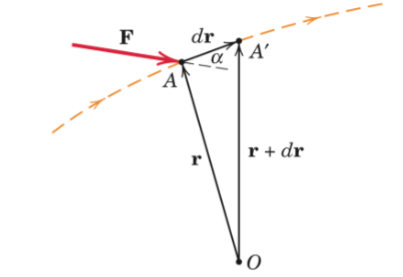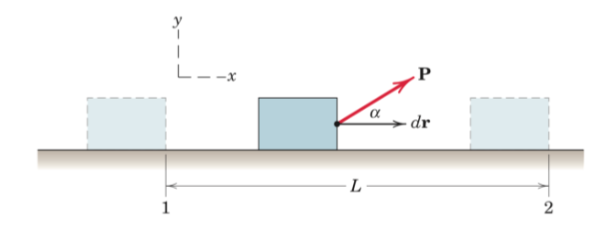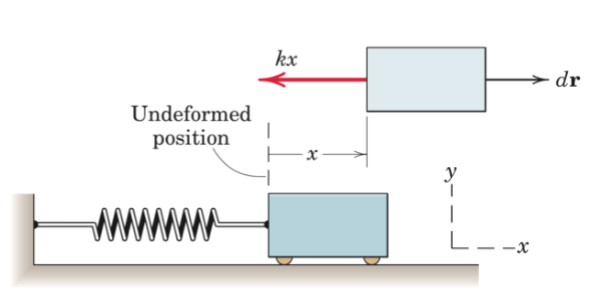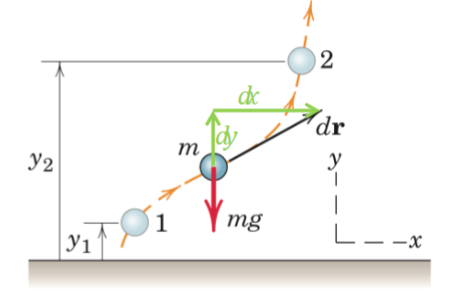Mechanical (Work and Energy)
1/11
Earn XP
Description and Tags
MEE1008: Dynamic Systems - Lecture 16
Name | Mastery | Learn | Test | Matching | Spaced |
|---|
No study sessions yet.
12 Terms
Work
dU = F.dr
= F.ds.cosα = Ft.ds
where α is the angle between F and dr, ds is the magnitude of dr and Ft is the component of the force in the tangential direction or in the direction of dr.

Work unit
Newton metre (Nm)
Joule (J)
Joule
The work done by a force of 1N acting through a distance of 1m in the direction of the force.
Calculation of work
U = ∫ Ft ds, within the limits s1 and s2.
Work associated with a constant external force P.
U1-2 = PcosαL

Work associated with a spring force
-½k(x22 - x12)

Work associated with weight (assumed constant g)
-mg(y2 - y1)

Kinetic energy of a particle
T = ½mv2
Work-energy equation for a particle
U1-2 = ½m(v22 - v12) = T2 - T1 = ΔT
Work always results in a change in energy.
Useful for solving problems that involve force, velocity and displacement.
Gravitational potential energy Vg
The work mgh done against the gravitational field to elevate the particle a distance h above some arbitrary reference plane (datum).
Vg = mgh
Elastic potential energy Ve
The work which is done on the spring to deform it is stored in the spring.
Ve = ½kx2
U’1-2
The work of all external forces other than gravitational forces and spring forces.
T1 + V1 + U’1-2 = T2 + V2
The kinetic energy at point 1 plus the potential energy at point 1 plus the work done between point 1 and point 2 is equal to the kinetic energy and potential energy at point 2.